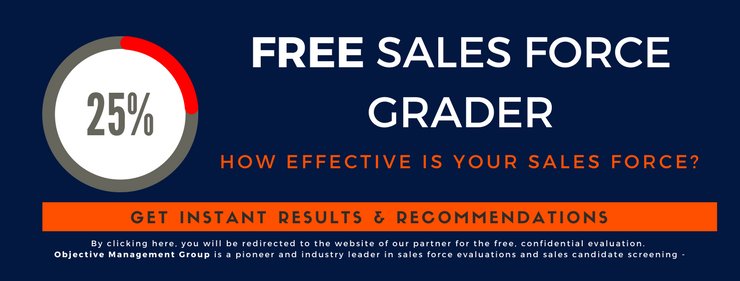
When and why is it appropriate to modify a sales compensation plan? A yearly review of your employees’ motivation level and an analysis of your turnover should provide a clear response to this question.
Here’s 4 important things to consider before modifying your compensation plan:
- The motivation of your sales reps
- The impact of sales force turnover
- Balancing turnover and compensation
- Taking into account your market
1. Your sales representatives’ motivation
As a sales VP, a regular evaluation of your sales team’s motivation level is an absolute necessity.
If this evaluation indicates waning motivation, then there’s no reason not to reconsider your compensation plans. Compensation is one lever to use to motivate your sales team. Having made sure to consider the intrinsic aspects, such as recognition and reward, you must now find out what most benefits your individual players’ desires in terms of compensation.
Take a sales rep, for example, whose past performance has been consistently stellar, has generated 50% growth in his/her territory over the last few years but suddenly their motivation levels are decreasing and it’s starting to show in their performance. Of course, you need to find out why and what is creating the downshift in motivation, and that motivation isn’t only about money.
Does this person still enjoy their work environment? What has changed? Example, has the privilege to work from home been reduced or revoked, have you shifted accounts between reps, or other non-compensation related factors that influence many sales people across many companies. All these factors should weigh in on your calculations. Once you’ve equalized all these aspects, then you can effectively calculate their worth in respect to compensation.
Another rep has been making 75K a year. Your evaluation indicates that they’re unsatisfied with this number, they’d rather be earning twice this amount. If this rep is effectively doing their part in terms of sales revenue, then the problem might be that their objective is set too low and they might benefit from a more challenging one.
2. Why sales force turnover is important
High or low, turnover is a major player when conducting your yearly evaluation. In this respect, work environment has a very important role in your analysis. Understanding what drives this turnover whether desired or undesired is key.
If you are experiencing high undesired turnover* in your sales team and are aware that your team is facing hard conditions, i.e. high resistance, high competition, in a mature industry. Then the compensation plan must be adjusted to reflect for these harsh conditions.
If your product requires elite salespeople, selling a product in which experience and sales skills are very important and where the demand for this talent is high, but the supply is low. You will need to adjust your compensation plan accordingly or keep being the training ground for the elite sales people that eventually graduate to the better working environment with your competitor. Maybe even worse be stuck with the underperforming group that you won’t be able to afford to change.
To put it simply; If eliminating negative working conditions from your analysis, you’re still finding your workforce is leaving you for the competition, then an increase in revenue is your only option to keep the desired elite performers.
Focus on the long run. If you consistently underpay your sales reps, you will surely end up paying more. Employees leave for the competition, and training new ones ends up putting a huge strain on the budget. A fairly paid workforce eliminates high turnover.
3. Is your compensation too rich?
Be careful not to overdo it. A very low turnover should and must be analyzed with diligence, as it can indicate an overpaid or overly pampered workforce.
An intelligent and vigilant sales force evaluation will reveal if your workforce is simply coasting along and profiting from high revenue, while not putting in the effort to justify their pay.
Maintaining a balance between a lazy, satisfied workforce and a performing, unsatisfied one is the difference between average and extreme turnover. If your compensation plans are well thought-out, and granted according to performance, turnover shouldn’t be a problem.
4. Take a good, hard look at the market before your yearly evaluations
Every year, before your reviews with the representatives, have a good hard look at your market, and your competitors.
What’s going on with turnover? Is it high or low? Both are likely indicators of bad compensation plans. If industry turnover is at 10%, and you’re at 30%, you must figure out why.
Oppositely, if industry turnover is at 10% and you’re at 0.1%, you must also figure out why. It may be because your working conditions are in the “pamper spectrum”, and the compensation plan is over the top.
A compensation plan cannot exist in the absence of the company’s reality. A company that has taken a large hit and is cash strapped for example must be realistic as well as honest. A sales team must understand why they’re asked to take on more risks than the competition. The upside may be further in the future, hence warrant loyalty in the short term for a longer term pay off. Be honest and you will keep those that believe in your strategy and goals.
Conclusion
Whether we’re considering sales motivation or turnover, the first step to understanding your workforce and knowing how to effectively compensate them is by evaluating them.
Only then can you make an informed decision about modifying their compensation plan to most benefit your business.




